Pressure Ulcer Prevention Audit Report: ICU, Singapore Hospital
VerifiedAdded on 2020/03/07
|5
|856
|121
Report
AI Summary
This report details an audit plan focused on pressure ulcer prevention, a critical healthcare concern, particularly within the geriatric population in Singapore. The audit aims to assess current practices in an ICU setting, adhering to NICE guidelines and addressing the increasing incidence and healthcare costs associated with pressure ulcers. The report outlines the rationale, which emphasizes the impact on patient safety, increased hospital stays, and mortality rates. It defines audit standards, including risk assessment using tools like the Braden scale, skin assessments, repositioning protocols, and care planning. The audit poses five key questions regarding best practices, frequency of assessments, care planning, and available resources. The study will be conducted in a private hospital's ICU, involving geriatric patients, ward nurses, and medical staff. The report also references relevant literature and aims to improve patient outcomes and reduce the burden of care related to pressure ulcers.
1 out of 5
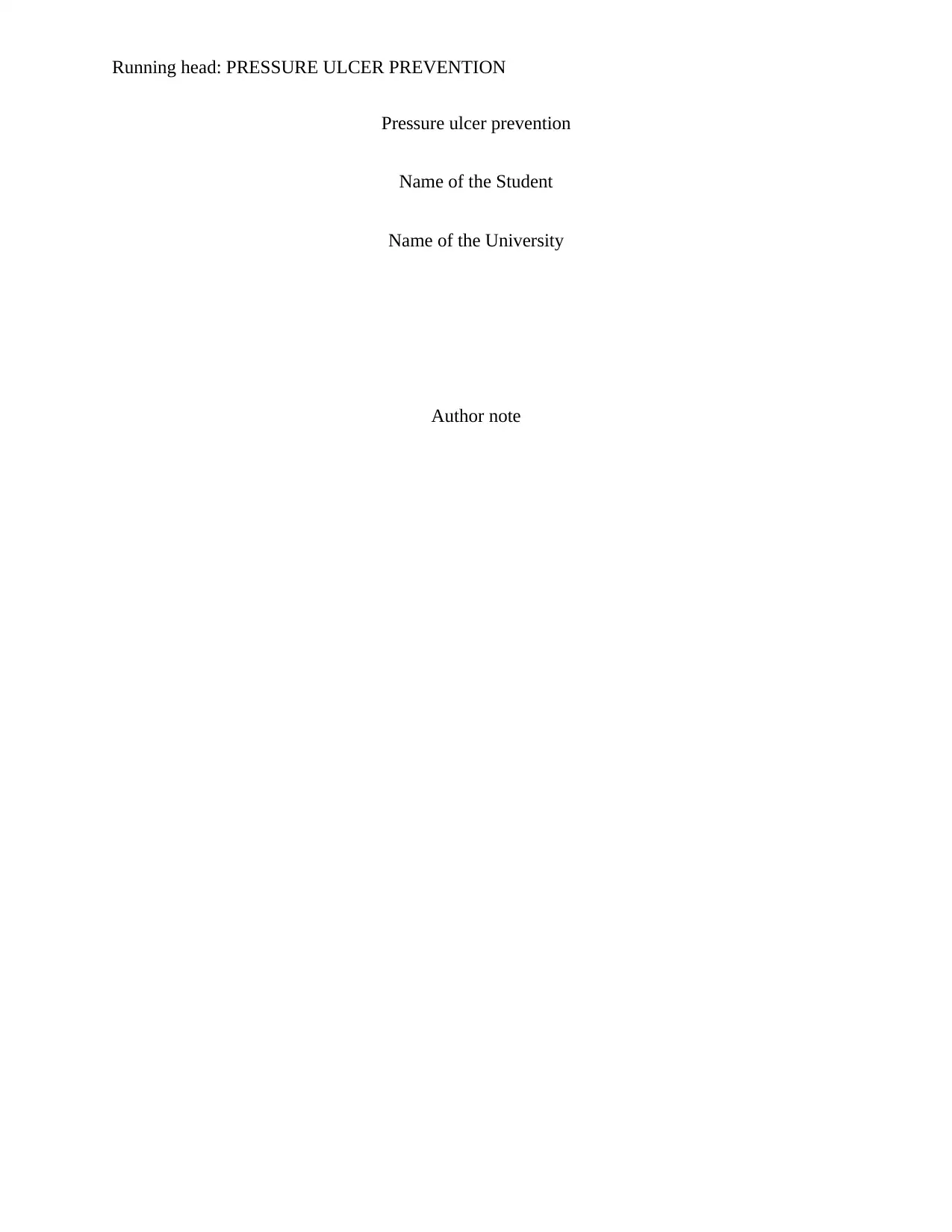
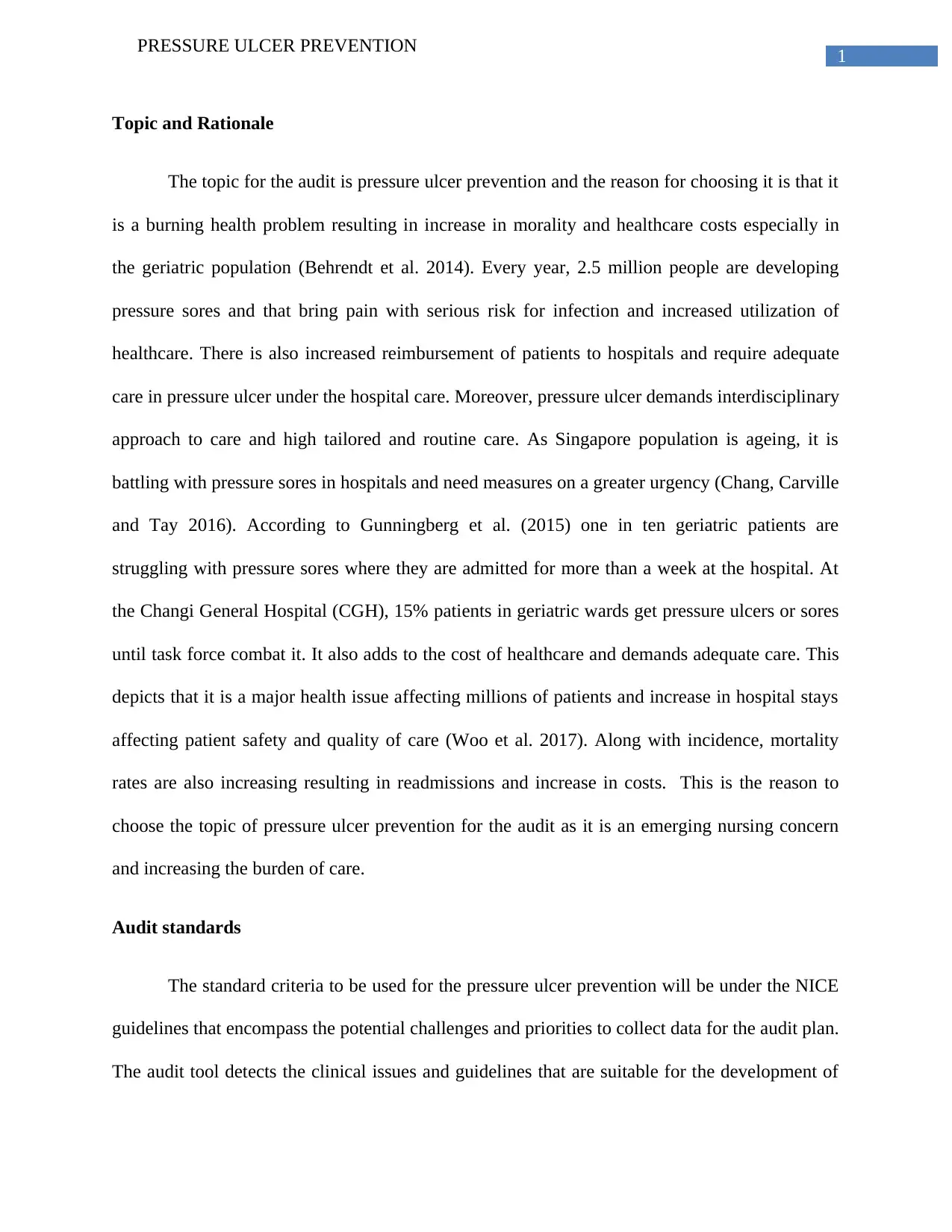
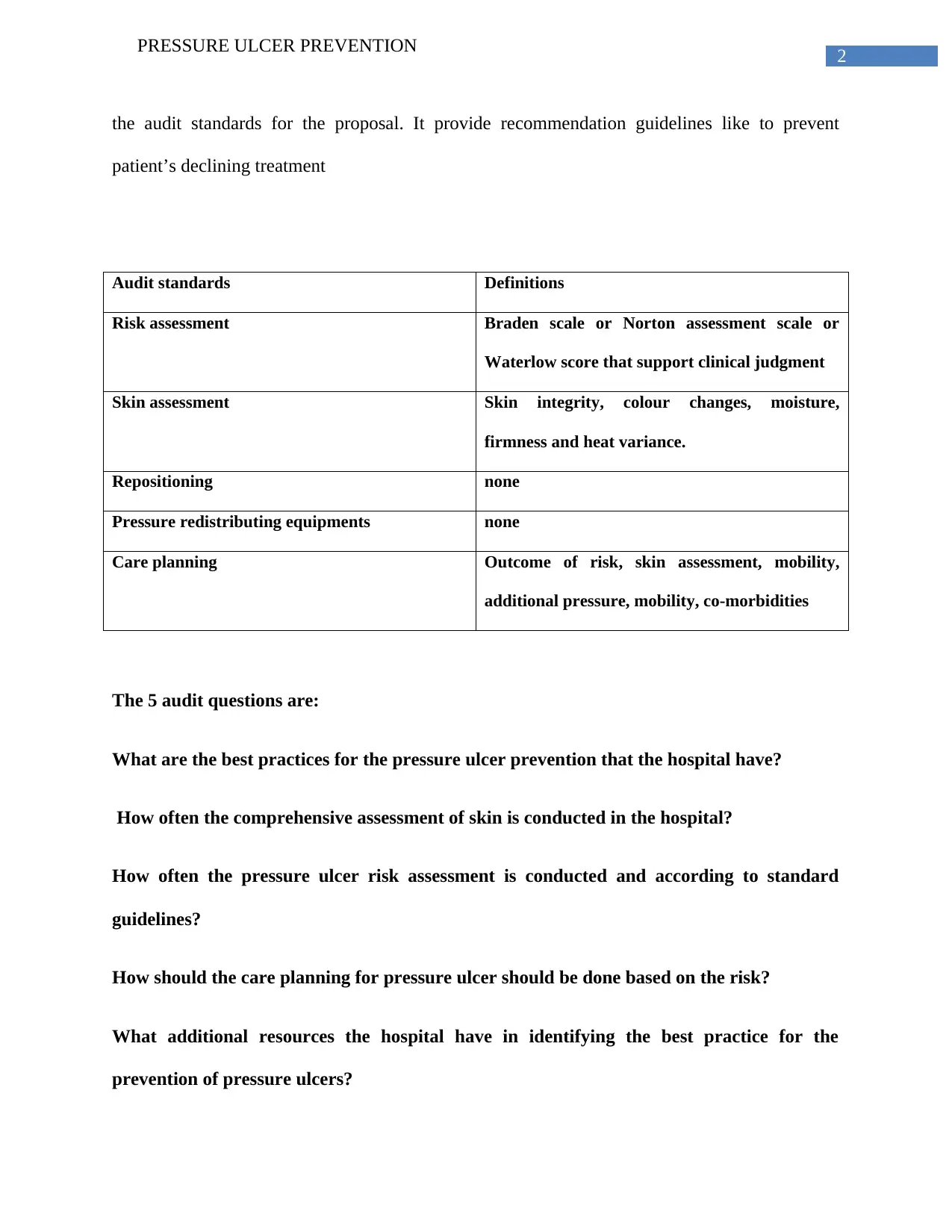

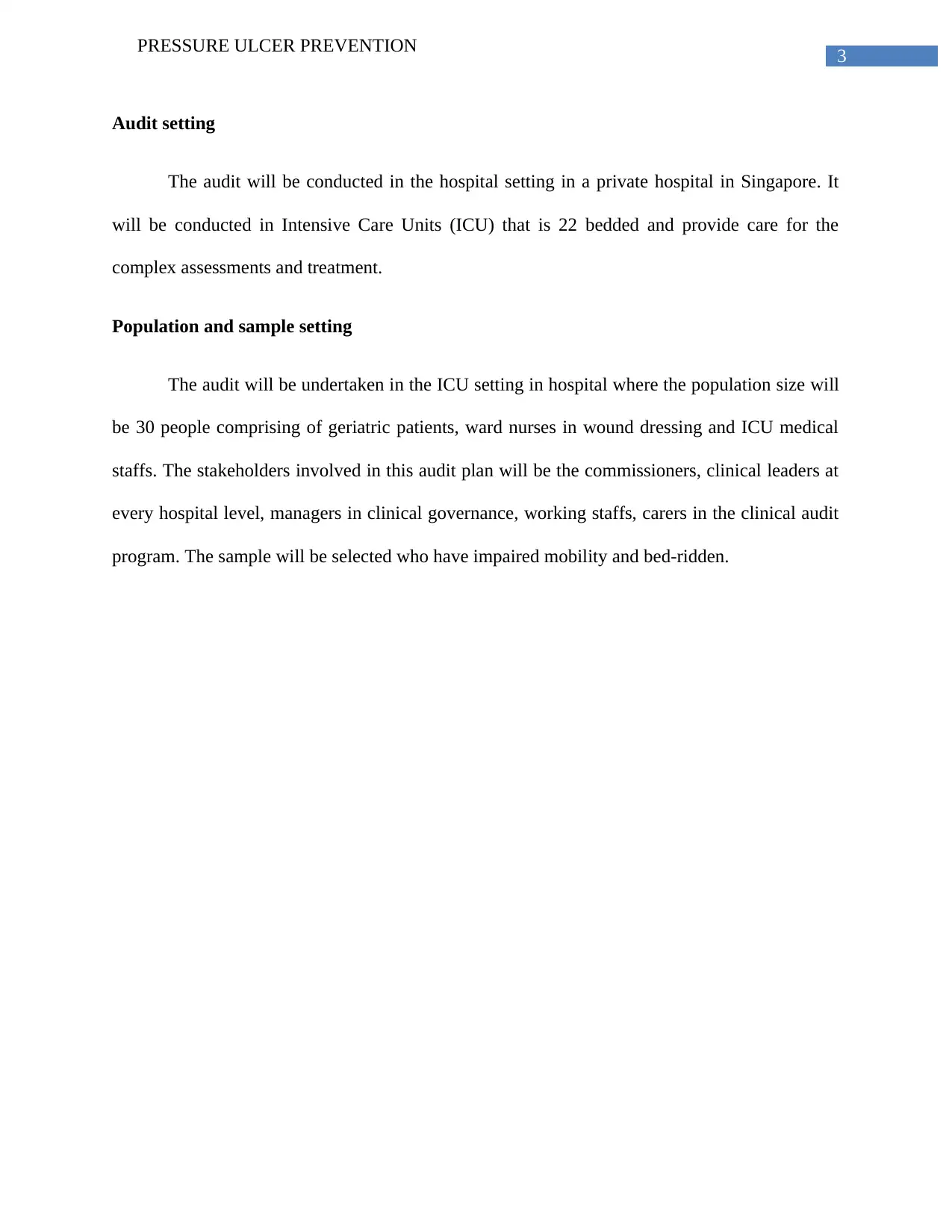
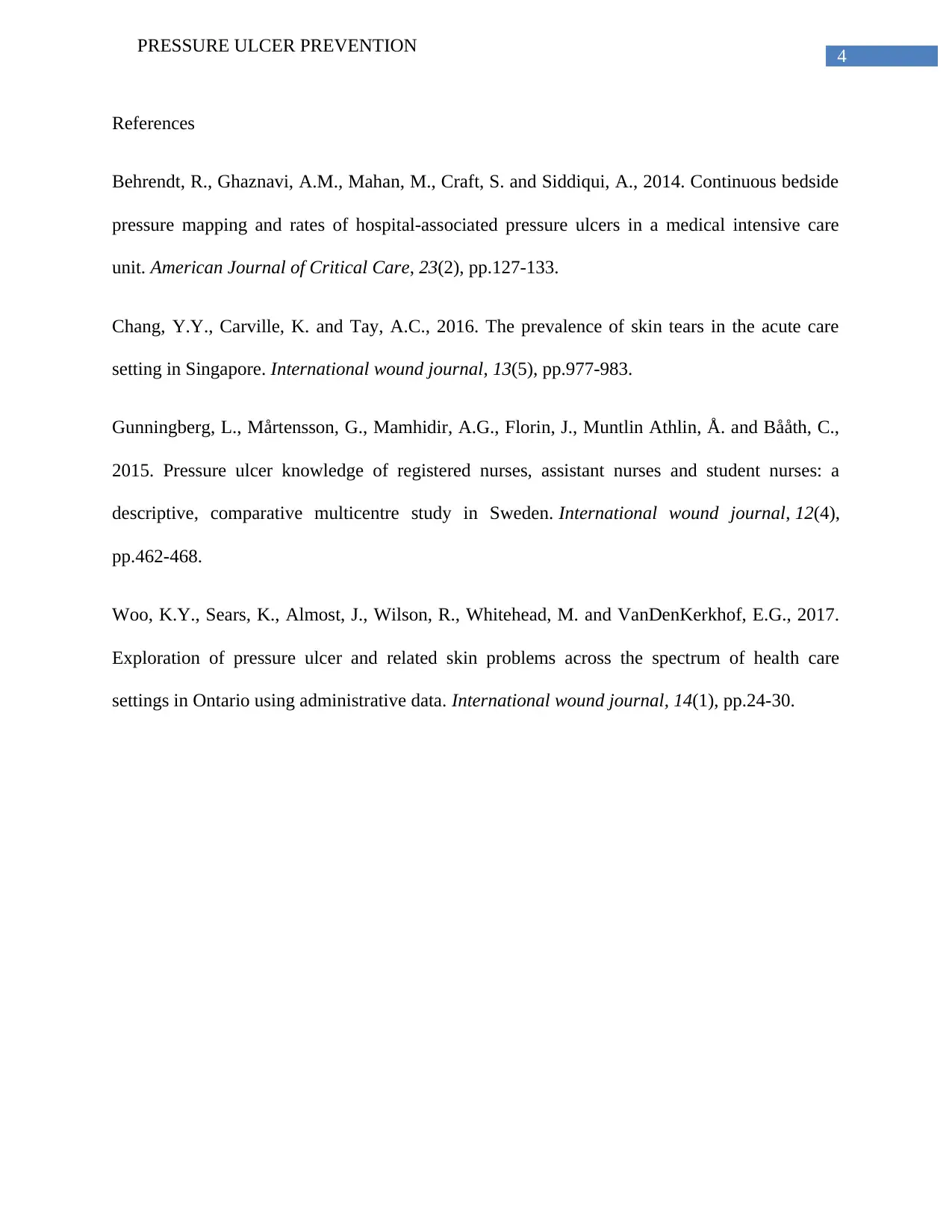





![[object Object]](/_next/static/media/star-bottom.7253800d.svg)